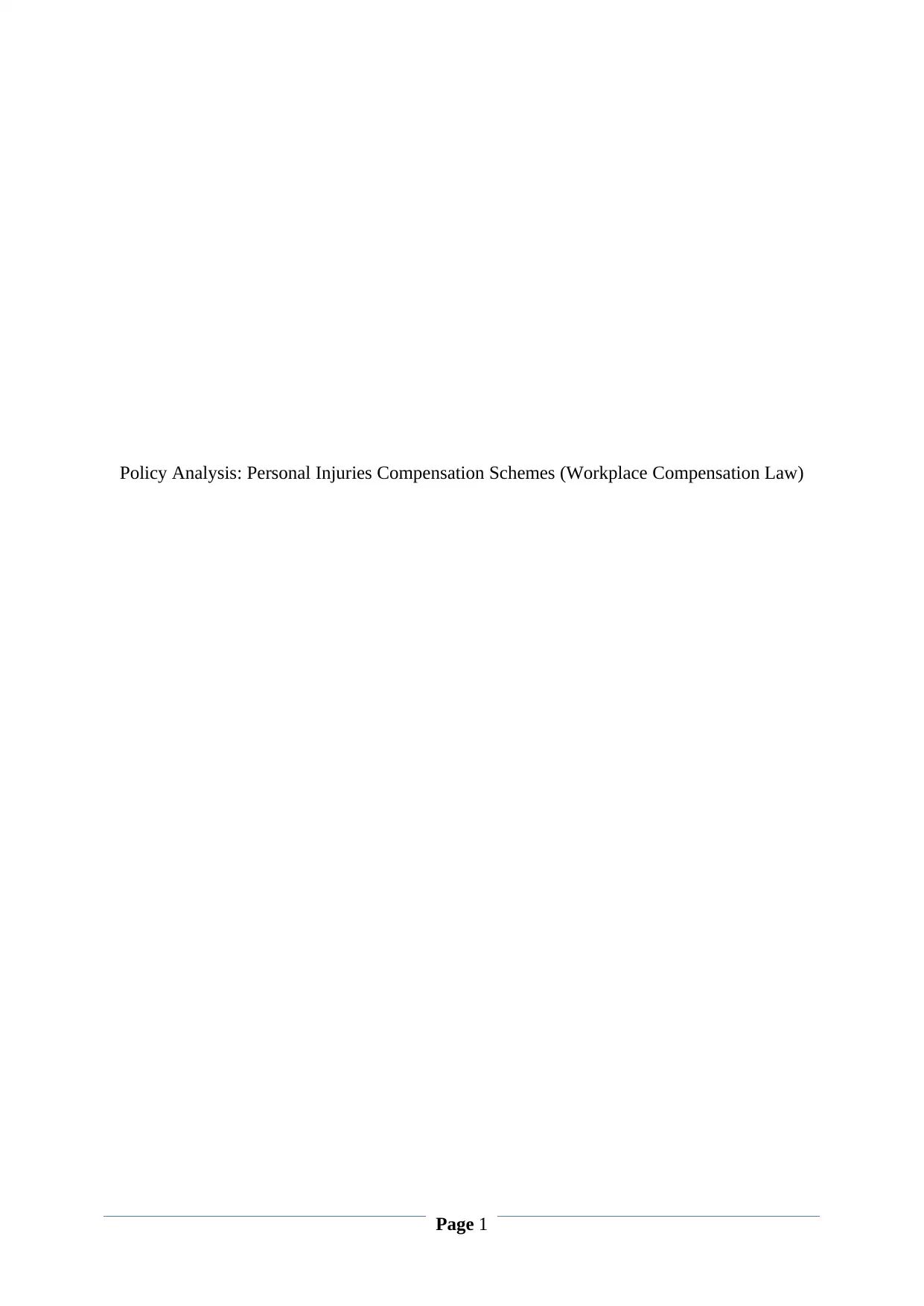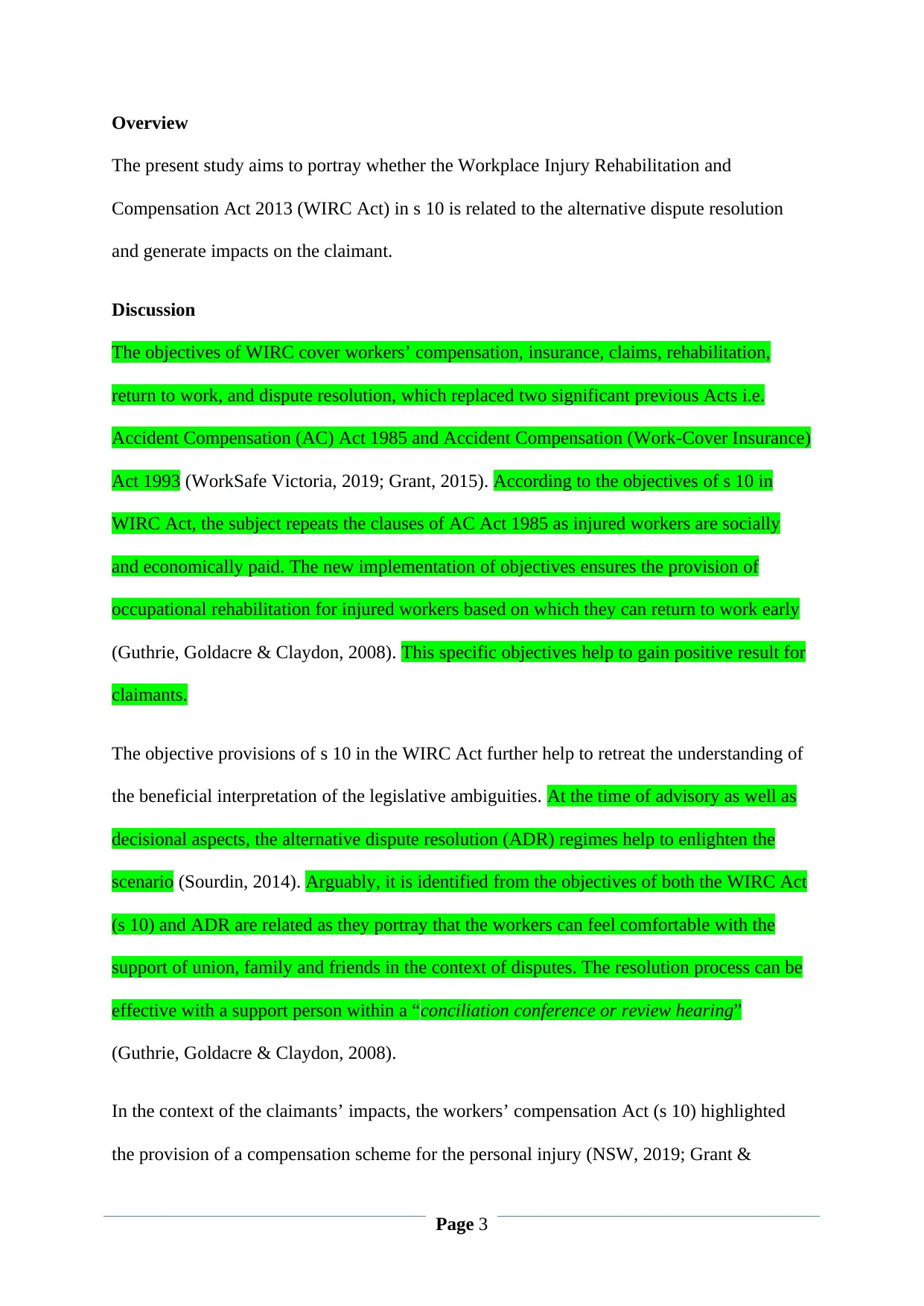WIRC Act s 10 Analysis: Personal Injuries Compensation Schemes
VerifiedAdded on 2023/04/22
|5
|734
|343
Report
AI Summary
This report examines the relationship between Section 10 of the Workplace Injury Rehabilitation and Compensation Act 2013 (WIRC Act) and alternative dispute resolution (ADR), focusing on its impact on claimants. It discusses how the WIRC Act, which replaced previous legislation, aims to provide compensation, rehabilitation, and dispute resolution for injured workers. The analysis suggests that the objectives of Section 10 align with ADR principles by ensuring injured workers receive social and economic support and occupational rehabilitation to facilitate their return to work. The report argues that the WIRC Act clarifies legislative ambiguities and offers a supportive resolution process, benefiting claimants by allowing them to develop their claims with the assistance of family, friends, or community support during review hearings. Ultimately, the report concludes that the WIRC Act's objectives, particularly in Section 10, are related to ADR and positively impact claimants in fulfilling their claims.
1 out of 5






![[object Object]](/_next/static/media/star-bottom.7253800d.svg)